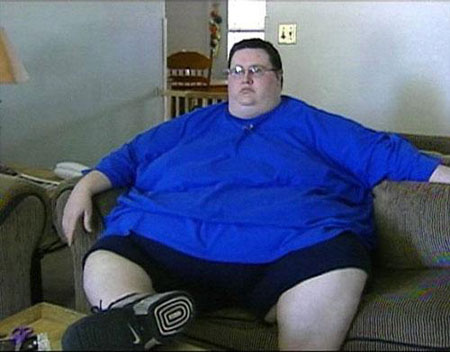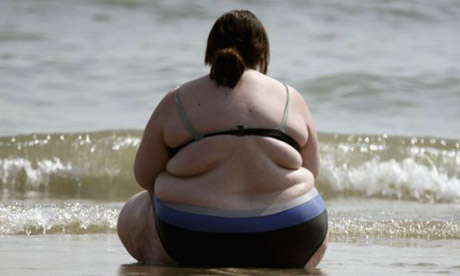By Brian D. Johnston
Do you really want to 'shock' your muscles?You've heard it several times before: 'shock the muscles in order to spur further growth
and to keep them from adapting.' There is an element of truth and validity to this statement, if applied in its proper context ญ which will be discussed shortly. However, do note that the term 'shock' is a misnomer. Although sounding 'hardcore', and contributing to a catchy article title, shock refers to a clinical syndrome in which the peripheral blood flow is inadequate to return sufficient blood to the heart for normal function, particularly transport of oxygen to all organs and tissues (Taber's Cyclopedic Medical Dictionary, 18th edition).
The result of shock could be due to a number of conditions, including hemorrhage, drug interaction, infection, and trauma (keep this one in mind). Symptoms of shock include marked paleness of the skin, dilation of the pupils, a rapid but weak pulse rate, shallow and increased breathing rate, and decreased blood pressure. Other possible symptoms include urinary retention and incontinence of feces, restlessness, and extreme thirst.
If you suffer from any of these symptoms following a strength training session, any of which are abnormal, seek medical attention immediately. Also, give careful consideration to restructuring your program; exercise is meant to improve health, not jeopardize it. Moreover, if you could regularly and, in fact, shock your system from strength training, you would not be able to sustain doing so very often ญ before incurring death.
Since trauma is a contributing determinant of shock, it may be argued that strength training is a form of shock, causing systemic trauma via muscular damage.
This type of trauma is more aptly classified as a homeostatic disturbance or disruption than that of shock. It is not akin to an automobile accident or having a finger cut off in a machining mishap. The induced trauma from physical exertion is a stressor mild enough that most people can experience it repeatedly without severe, physiological complications, but is harsh enough to induce a soft tissue change of increased strength and lean muscle mass. However, in order for the negativity of exercise stress to become a positive, to cause a change, sufficient time between training sessions must subsist to allow the transpiration of supercompensatory adaptation.
Adapting to strength training
Adaptation is the adjustment to a change in internal or external conditions or circumstances. In other words, our bodies and minds become 'used to' particular stimuli wherein the stimuli are no longer considered new or unusual, but part of everyday existence. If a stimulus invades our bodies or minds too frequently, not allowing for growth or change, adaptation results in stagnation or regression, also known as cellular resistance.
There are two types of adaptation. The first type is developmental (homotrophic; homo ญmeaning the same, trophic ญ concerned with nourishment), being a progressive reaction resulting in an enlargement and multiplication of preexisting cells without qualitative change. This type of adaptation requires an increase in activity, such as a muscle having to perform more (overload) metabolic work than usual. In the case of strength training, the term 'more' generally refers to an increase in weight lifted. Although an increase in duration can benefit anaerobic training ญ by increasing the load time of the set ญ doing so can only continue so long before reaching diminishing returns, causing overuse atrophy of the muscles. Hence, it is regular weight increases that are of primary importance in overloading muscles to stimulate further strength increases.
The second type of adaptation is redevelopmental (heterotrophic; hetero ญ indicating different), being a forced readjustment to an entirely different kind of activity. Although this refers to a definite qualitative biocellular change, the term can gratuitously apply to change as a consequence of imposed demands to exercise. Specifically, too much activity, too frequently, results in overuse atrophy of fast twitch fibers, those responsible for the greatest magnitude of muscle mass and strength. They diminish in size to preserve contractile energy and to accommodate an environment characterized by endurance. Consequently, regardless of how hard you train it is vital not to perform more exercise than is necessary to stimulate the growth mechanism response.
Subsidiary classes of adaptation include the result of growth processes and the acquisition of neuromuscular skills. In the first instance, it is vital for the body to adapt to stress during recovery, allowing for physiological and architectural change in muscle tissue, i.e., increase functional ability as a result of muscular hypertrophy. In the second instance, it is necessary that the application of stress regularly change so the muscles do not become accustomed to the method of homeostatic disturbance. However, change must not be so frequent that you cannot consistently compare different measurements of training data in order to determine the efficacy of a strength training program.
The above derivative aspects deal with the specificity of adaptation. On a broader scale, the modality of adaptation alters throughout a training career, subsuming three distinct stages: 1) beginner (neuromuscular), 2) intermediate (hypertrophic), and 3) advanced (neuromuscular).
Beginner Trainees
During the initial few months of strength training, as with any non-practiced physical activity, adaptation is largely neurological. Uncoordinated bodies ญ unaccustomed to lifting weights ญ do not efficiently lift loaded barbells, do not isolate the intended targeted area, using more musculature and energy than necessary. It is not unusual, for example, for beginners to feel more tension in their forearms than in their shoulders while performing lateral raises, or experience sore abdominals after performing triceps pushdowns. Eventually coordination and motor skills improve, shifting a greater burden on the targeted muscles.
Intermediate Trainees
Subsequently, once the nervous system adequately adapts to skillfully lift weights, it is then obligatory for muscles to hypertrophy in order to confront future overloads. Although several hypotheses exist as to why and how muscles adapt via hypertrophy, it appears a key factor is overcompensation of protein synthesis or an increase in myofibrillar proteins. Greg Bradley-Popovich explained this process in the book Rational Strength Training: Principles & Casebook (available at www.i-a-r-t.com) as follows:
"During the process of protein synthesis in any cell, energy is consumed in the form of adenosine triphosphate (ATP), the body's energy currency. Muscle contraction, like protein synthesis and the vast majority of other physiological processes, also consumes ATP. The moments of ATP shortage during protein synthesis (as a result of ATP being used for intense muscular contractions) are hypothesized to be of paramount importance. Supposedly, an unknown signal would report to the muscle cell nuclei ordering them to send more protein-building instructions back out into the cell. It is proposed that when a trained muscle attempts to "catch up" on its protein synthesis during rest, it inadvertently overshoots resulting in a supercompensation, or net increase, in the amount of muscle protein. The concept of this competition for energy, called the ATP Deficit Theory, is somewhat analogous to the glycogen supercompensation characteristic of trained muscles."
Evidently, to promote muscle hypertrophy, the activity must be demanding enough to produce this effect.
Low intensity endurance training will not sufficiently deplete ATP stores available for protein synthesis. ATP can actually regenerate itself that quickly. Conversely, if the tension time of a set is too brief ญ apparently under 45 seconds (although this is debatable) while implementing very heavy weights ญ ATP is taken up quickly, but not in proportion to muscle fatigue; again resulting in lack of ATP store depletion allocated for protein synthesis. This may explain why power and Olympic lifters increase strength (via skill acquisition/adaptive coordination) without the characteristic hypertrophy of bodybuilders. Hence, in order to maximize muscle growth, it is best that sets last at least 45 seconds, but not so long (over 2 minutes) as to promote a high endurance capacity and potential overuse atrophy.
Advanced Trainees
After 18-24 months of proper training (a rarity, indeed), realizing optimum hypertrophic adaptation becomes quite probable. However, this is only true relative to the individual. It would be true of a thirty-year old trainee, whose testosterone levels are slowly declining, but not applicable to a 15-year old teenage boy. However, with all factors being ideal, two years is more than sufficient to realize optimum hypertrophy in the young adult.
Thereafter, hypertrophy slowly relinquishes its role as a fundamental factor in progressive strength gains, with neurological and psychological factors taking over. Trainees become so used to lifting that improvement continues by implementing better methods of leverage while increasing the participatory rate of surrounding muscle groups to help lift progressively heavier weights ญ also known as adaptive coordination. Trainees also acquire the mental focus and discipline to better use emotions (e.g., anger) to volitionally 'will' weight up ญ the psychological factor.
It then becomes a trainee's greatest challenge to eke out a few final pounds of muscle mass, to realize full genetic potential. For a novice, the mere inclusion of resistance training is new and unusual. Consequently, nearly any program - regardless of how poorly designed - elicits a positive effect. (This does not suggest that those with six months or less training experience should refrain from the hyper-training suggestions in this article, but is unnecessary and should remain in reserve for when progress slows considerably.)
However, for the advanced trainee, it is not as simple as performing the same workouts and the same exercises incessantly. Adding a repetition or a few pounds to the bar inevitably increases strength ญ if sufficient recovery exists - but is only part of a synergistic totality necessary to stimulate muscle hypertrophy beyond current levels. Repetition of a mundane stimulus, regardless of the seemingly positive outcome of strength increases from workout-to-workout, results in over-adaptation of a stressor. What is occurring are strength increases due to neuromuscular coordination and volitional effort. As previously stated, the objective is muscle adaptation to exercise stress ญ to increase functional ability ญ not adaptation to the method of exercise stress - to the element stimulating growth. To make further progress, to fulfill one's ultimate genetic potential, workouts must undertake unusual events ญ events to which the body is not accustomed.
Analogously, years ago when people suffered from certain physical or mental diseases, doctors prescribed blood-letting and shock therapy. Today these procedures seem barbaric, but they did serve a purpose. Medical professionals hypothesized, and correctly so, that diseases become part of the individual's internal environment. The result: the patient is unable to continue fighting the disease, remaining complacent and coexists within a 'groove'. The inclusion of blood-letting and shock therapy introduces a new stress, so intense and foreign that the body establishes an all-out defense mechanism against the invading intruder (being the loss of blood and electrical shock) that, concurrently, combats the original disease, or at least holds it in submission.
Strength training must be of a similar nature: very intense and unusual to traumatize the muscles and homeostatic tendencies into further growth/change, forcing them to adapt to a higher level of functional ability. However, realize that the more intense the stimulus, the lower the volume and frequency must be in order to minimize inroading into recovery ability ญ both systemically (the body as a whole) and locally (the trained muscle in question). Furthermore, increasing sets, volume or frequency is not an ideal method of traumatizing the muscles in an effort to improve muscular hypertrophy. If it were ideal, ten sets would be better than one, twenty sets better than ten, etc. ad infinitum. Obviously this rationality produces diminishing returns and inevitable overtraining.
Furthermore, past a certain level, it is more the extent or magnitude than the intensity of tissue damage that stimulates cortisol production, the hormone responsible for catabolizing inflammation due to (exercise) stress; the hormone that, likewise, catabolizes muscle protein. Consequently, performing multitudinous sets in order to annihilate a muscle is both unnecessary and very unproductive. Doing so proceeds past the point of stimulation into over-stimulation, a factor that negates precision of dose/response measurement while espousing ambiguity.
What is more, some periodization proponents suggest that there is an increase in growth hormone (gH) production after 45 minutes of training. However, they fail to indicate the significance of a correspondingly higher cortisol release, nullifying any potential benefits of a gH boost. Excess cortisol actually inhibits the function of gH. Moreover, the increase in gH from exercise is not analogous to that of potent injections taken by some bodybuilders, the former being too diminutive to notably accelerate or positively influence muscle hypertrophy beyond norms ญ at least it has never been proven otherwise.
Advanced training methods
What, then, constitutes intense and unusual? I can provide several examples from my own experience, examples that produced excellent results in a brief period of time, even after several years of unproductive, high volume training. (Note: although some of my clients and I have benefited from the following methods, they will not suit everyone's recovery ability and rate-of-fatigue [i.e., fiber type, endocrinological responses].)
My first experience with the 'unusual' occurred after an initial year of training. At age 16, progress came to a standstill. unable to push my body weight past 150 pounds at a height of 5' 10", I purchased Mike Mentzer's Heavy Duty™ arm course, an approach that promoted rest-pause training. This method suggests performing 2-3 reps to muscular failure, followed by singles or doubles to muscular failure with the same (or slightly lesser weight) with 10 second rests between the mini-sets, totaling 5-8 reps. Within 3 sessions of training my biceps once per week for one rest-pause set of concentration curls, my arms increased in size by 1/2 inch. I then made the fatal error of believing 'more is better', performing two rest-pause sets twice weekly in the hopes of accelerating growth. Accordingly, the intensity was too extreme to accommodate the volume and frequency, and I quickly lost my 1/2 inch gain in a matter of a month. I made a second error in logic, that HIT was inferior to 'traditional' training (although it produced a most spectacular gain), and returned to my previous program of higher volume, lower intensity work.
After a further two years of training, I perused some old training records, analyzing my rest-pause experiment. I then hypothesized that it was the new, unusual and intense stimulus that produced the gain. I then conceived a new procedure for my calves, which stagnated at sixteen inches for several months on a program of up to 10 sets, twice a week. I performed only one set of single dumbbell calf raises, consisting of 8 repetitions to muscular failure, followed by eight forced then 8 negative repetitions. The effort was, indeed, intense and the delayed muscular soreness even worse. Unable to walk for two days, I stayed home from high school vowing never to do that again. However, after twenty days the soreness subsided and I repeated the workout. Within four sessions, averaging once every ten days, my calves grew 3/4 inches.
Six years thereafter, at age 24, I performed a much different calf program consisting of one set of seated calf raises and one set of standing calf raises, each for an arbitrary 100 continuous repetitions. Extremely torturous, I chose only to complete two such workouts, but increased my calf girth another _ inch in two weeks. Evidently, my calves consist of a higher ratio of slow twitch, endurance fibers; otherwise, they would have atrophied due to the volume (load time) of each set.
About the same time I substituted heavy squatting of 8-10 repetitions for twenty rep sets, performing only one such set, after an initial warm-up, once a week. Within 5 sessions my thigh circumference increased by three-quarter inches. The higher repetitions, together with a different training environment of a much longer load time, was a needed change (disturbance) to my homeostasis and, likewise, the growth appeared to reflect an abundance of slow twitch fibers in my thighs.
All of these training applications have several elements in common. First, the strategy is unusual, although the exercises implemented were familiar. Second, muscular adaptation was fairly quick, realized within 3-5 workouts with any further application failing to produce additional (or at least noticeable) results.
Third, to obtain optimum results the intensity variable must be ideal for the muscle group in question. For example, it would be perilous to perform 100 rep sets for a muscle predominantly fast twitch, and most likely ineffective to integrate heavy rest-pause training for a muscle predominantly slow twitch. Fourth, and from my empirical data, implementing the same intensity variable in future workouts does not increase muscle hypertrophy nearly as well, or at all, in comparison to the initial application. Declining results may be due to two factors: 1) neuromuscular memory (adaptation to the method of stimulus), and 2) the muscles are that much closer to their genetic apex, so it is illogical to expect later progress to be as noteworthy.
There are some other factors to consider. Foremost, appropriate application of the overall scheme of the above sample intensity variables, as well as others, must take into account that (exercise) stress affects the body as a whole, thereby systemically making inroads into recovery resources. Accordingly, limit any type of 'shock therapy' to one muscle group, or one exercise affecting multiple muscle groups at a time. Furthermore, instilling hyper intense training methods correspondingly necessitates the maintenance of past training poundages (or a modest overload) for remaining exercises and body parts, thereby reducing inroads into recovery. This point is vital since attempting to dramatically improve on all exercises increases the risk of overtraining.
It is then imperative to discontinue hyper training after 4-5 training sessions, or when noticing diminishing returns, to avoid further and unnecessary inroading. Allow 1-2 weeks complete rest (no training) then choose a new exercise/muscle group, repeating the process. In sum, it may take six or more months to cover the entire body, depending on frequency of training and the number of muscles/exercises chosen.
Do not make the mistake of altering your program every session, implementing the so-called 'Confusion Principle.' Altering workouts randomly, or changing a routine too frequently does not provide consistent and regular data to determine progress results. The only thing being confused is your ability to apply logical and standardized analysis methods, thereby making training a hit and miss approach.
Regarding frequency, it does not need to be re-regulated if training the remaining, non-hyper trained body parts on a maintenance/modest improvement basis. However, the muscle/exercise receiving a hyper approach may need to be down-regulated in frequency to once every second workout (half as often than is typical) to accommodate the unusually high demands and to better allow for localized recovery of the affected soft tissues. For example, if you typically incorporate the leg press once every seven days, then once every fourteen days would be in order. Additional consideration must also be given to the cross-over effect of the hyper exercise in question. Since the leg press affects hamstrings and glutes, it is vital to refrain from additional exercises for these muscle groups, both on the hyper day and especially on the non-hyper days.
By implementing the above hyper-training fundamentals, you may be quite surprised as to the effects produced, even after months or years of nonexistent results. However, do so cautiously, rationally and, most importantly, sporadically.
From: http://www.seriousstrengthtraining.com/shock_muscles.htm
















































